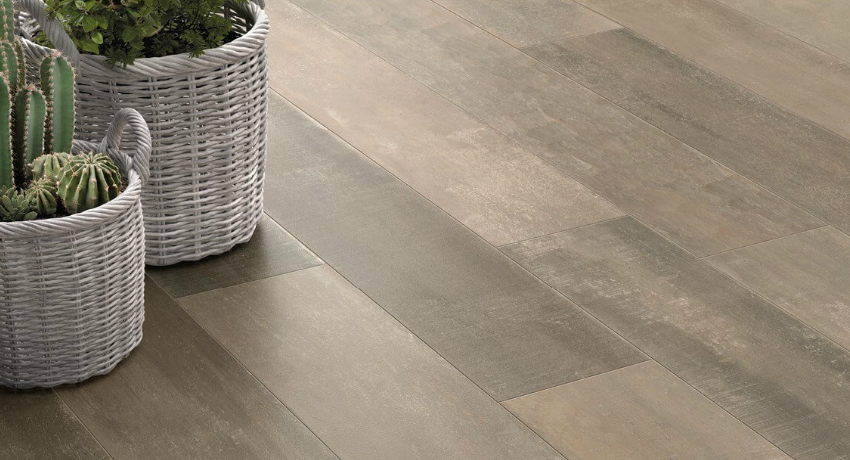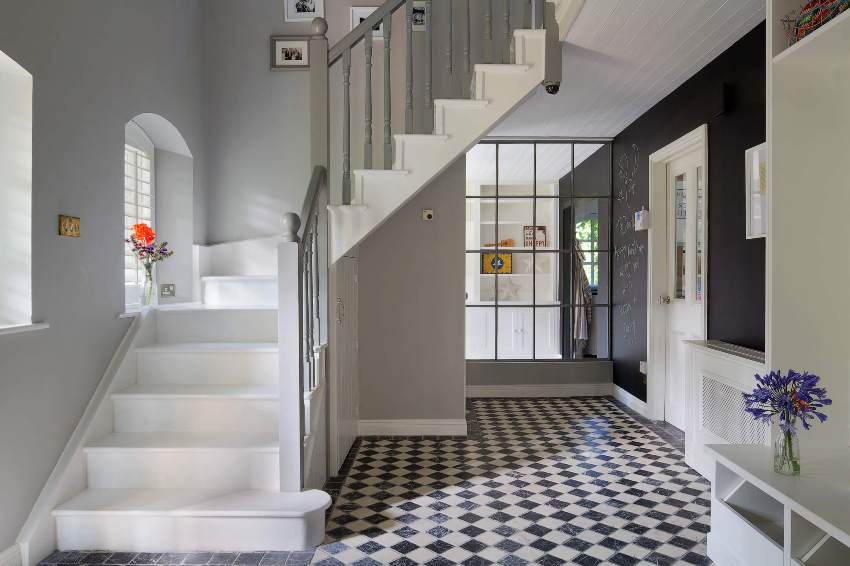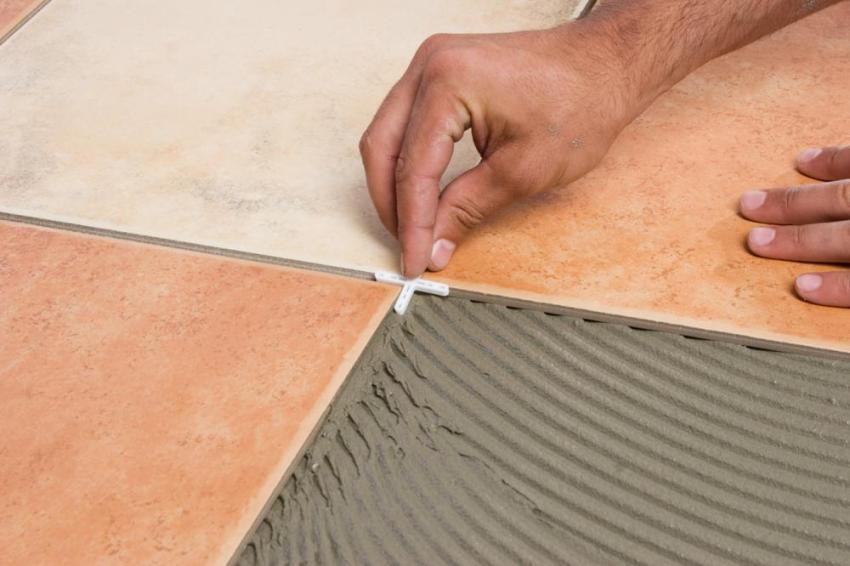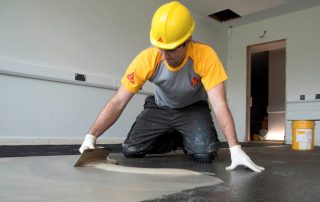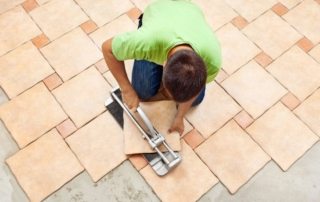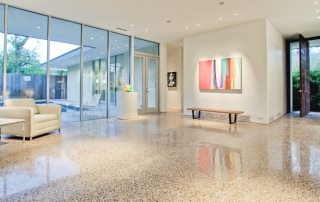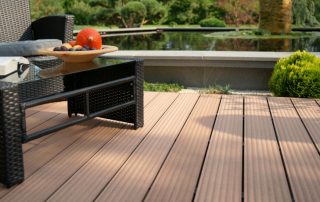Tiles made of porcelain stoneware are classified by professionals as universal finishing materials, since its use can give a room an individual style. Porcelain stoneware floor tiles are made from clay and powder compositions using a special dry pressing technology. The features of this material and the methods of laying it on the floor will be discussed later in the article.
Content [Hide]
Porcelain stoneware floor tiles: performance characteristics
Correctly laid, porcelain stoneware tiles qualitatively eliminate all the imperfections of the coating, while creating a design accent in the house. The special properties and characteristics of the feedstock are the reason for the popularity of this product. The material of manufacture allows the production of porcelain stoneware floor tiles with the following performance characteristics:
- minimal susceptibility to abrasion. This property is one of the most important for this product. The floor covering created on its basis retains its excellent appearance even under high loads and significant mechanical stress;
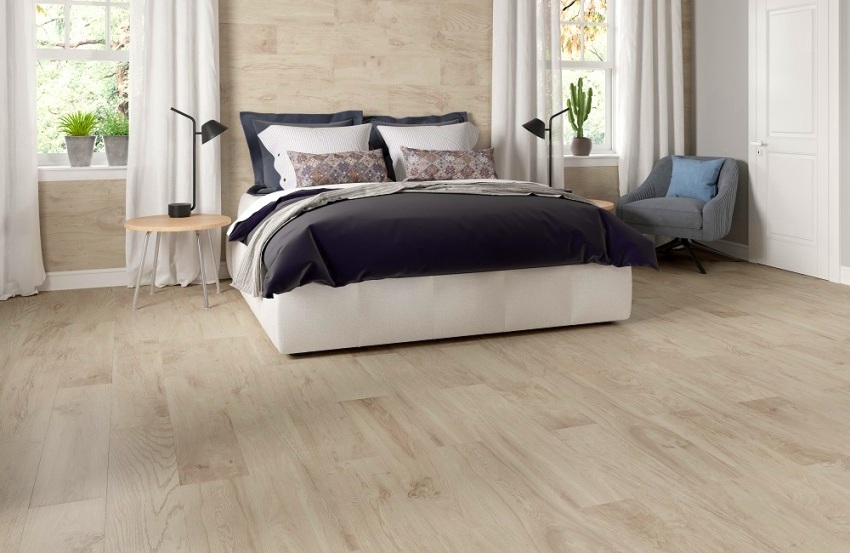
The high level of strength of porcelain stoneware tiles allows you to maintain a good quality of the coating for many years
- surface hardness. This characteristic is a continuation of the previous one. According to the generally accepted ten-point scale, porcelain stoneware under a stone for the floor is awarded 7 points;
- resistance to contact with aggressive chemical compounds. This material can withstand virtually all substances except hydrofluoric acid;
- little moisture absorption. Thanks to this property, laying of porcelain stoneware under a stone is allowed not only inside the living quarters, but also outside. In the winter season, the tiles will not crack due to the formed ice. For the same reason, it is characterized by frost resistance. Such a tile can withstand at least 50 freezing cycles followed by thawing. Any other type of flooring does not have this property.
The industry produces products of this type in different thicknesses.You can buy porcelain stoneware tiles with a value of this parameter, fluctuating in the range of 7-30 millimeters. Another important characteristic is the length of the side of the product. The most in demand is porcelain stoneware 30x30 and 60x60 cm. The table shows all the geometric parameters of this type of cladding, produced by modern industry.
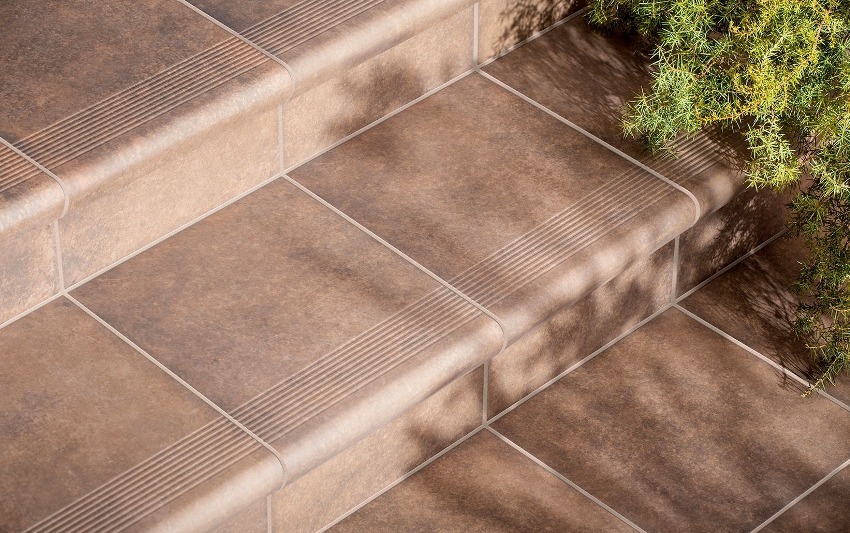
Cramogranite can be used not only for cladding floors, but also for finishing steps, which will keep the building's visual appeal for a long time
Helpful advice! When choosing porcelain stoneware tiles, be guided by the following criteria: the style of the room, its size and the ease of laying the flooring elements.
Geometric dimensions of porcelain stoneware tiles (cm):
| 120×360 | 120×15 | 40×40 | 15×30 |
| 120×180 | 60×90 | 30×60 | 20×20 |
| 120×40 | 60×60 | 30×45 | 15×15 |
| 120×30 | 45×45 | 30×30 | 5×5 |
Variety of species: what is possible buy porcelain stoneware for the floor
The most important criterion when choosing this product is the type of surface of the facing elements. Not only the price of porcelain stoneware tiles depends on its performance, but also the degree of aesthetic appeal of the living space.
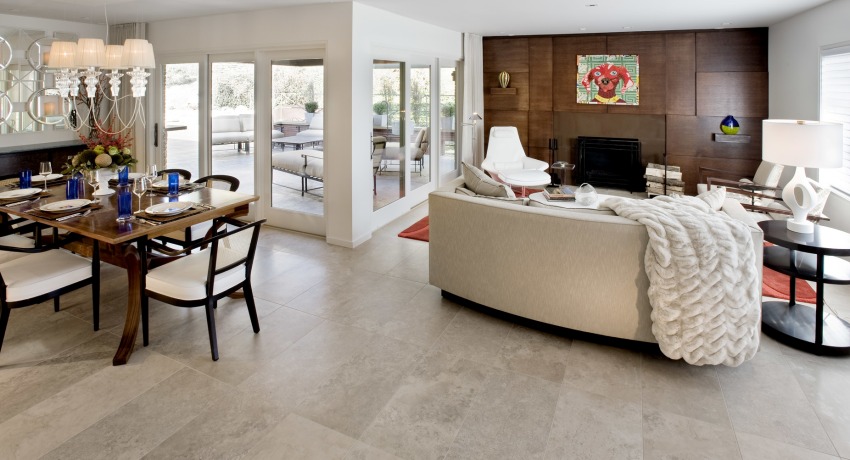
Porcelain stoneware cladding is represented by a huge range of colors and textures, so there will be no problem of combining this type of material with other room finishes
Surface types of porcelain stoneware tiles:
- with a matte surface. This type of tile is one of the most common and cheapest types of facing material. Its technical characteristics are formed in the course of the standard high-temperature firing process of the workpiece with its subsequent processing. Due to the low quality, this material was not widely used;
- with a polished surface. At the end of the firing process, the front side of the finished facing element is cut and polished, which gives it its characteristic pattern and shine. However, this technology has its drawbacks. In particular, in the process of grinding, the micropores of the material are exposed, which is why the surface of the tile can be scratched when laying porcelain stoneware on the floor. And this, in turn, leads to dirt and the need for careful maintenance of the floor covering. In addition, there is one more disadvantage of this type of porcelain stoneware: the polished surface is rather slippery. Therefore, it is not recommended to use such a tiled material for facing the porch and steps;

Glossy porcelain stoneware tiles, due to their increased reflectivity, visually enlarges the room and looks impressive regardless of the quality of lighting
- with a semi-polished surface. The coating created on the basis of such a tile is characterized by an effective structure. And given the fact that the price of porcelain stoneware for this type of floor is quite democratic, these products are in great demand today;
- waxed or satin-finish porcelain stoneware. The manufacturing technology of such a tile is that transparent mineral crystals with different melting points are applied to the surface of the workpiece. Although firing is carried out under standard temperature conditions, the final product acquires specific technical characteristics. At first glance, it may seem that its front side is treated with wax;
- with glazed surface. Other names for such tiles are enameled or smoked. First, enamel is applied, and then the workpiece is fired;
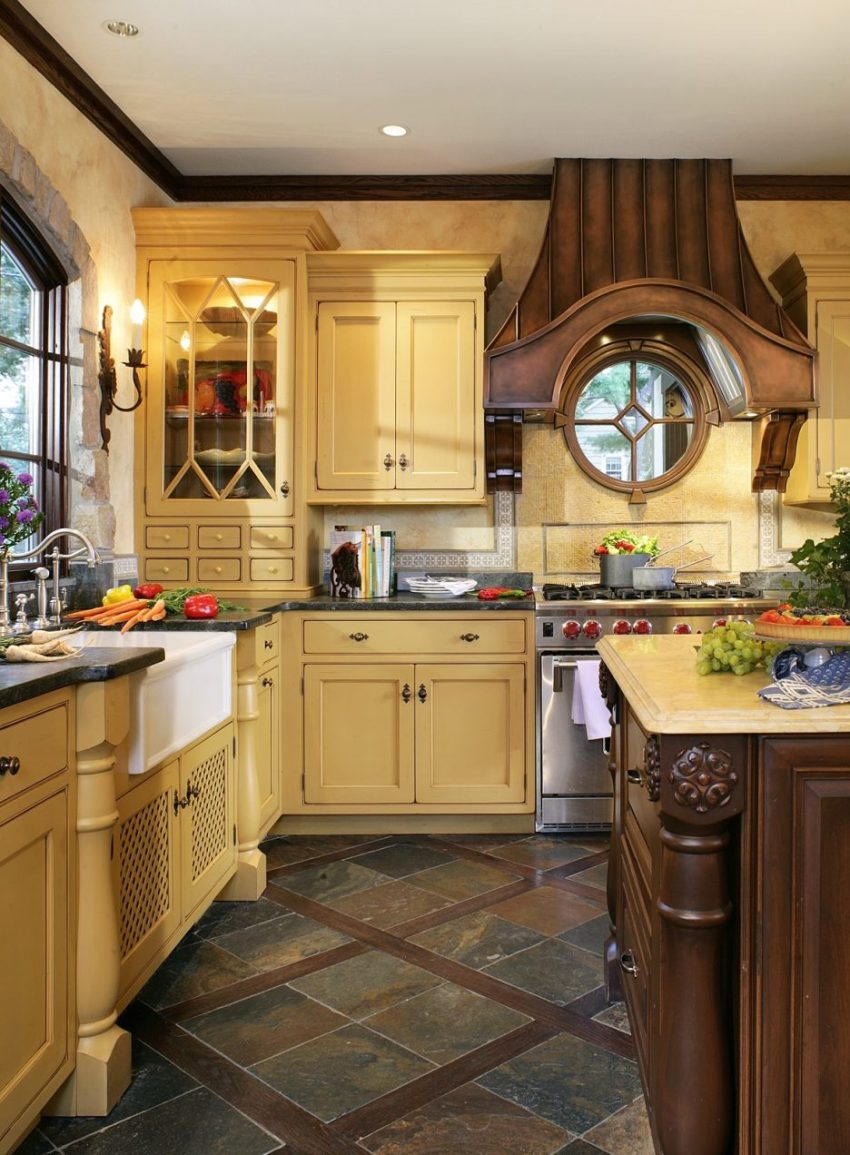
Matte tile perfectly masks stains, streaks and traces of cleaning, and the degree of its porosity is not much inferior to its glossy counterpart
- with rectified surface. This is the most expensive flooring option. The structured surface is formed by additional processing using special equipment. The tiles are produced to the perfect exact size by cutting off the side edges. This allows you to simulate a continuous flooring, as the seams are invisible.
Note! In rooms with a large flow of visitors, it is not advisable to lay a tile-based coating with a glazed surface. Its resistance to mechanical stress leaves much to be desired.
If you decide to buy porcelain stoneware tiles for your floor, do not forget that such a coating also needs maintenance. Especially in the hallway. After all, sand that has fallen from shoes after walking along the street, being a good abrasive, spoils the top layer of the floor covering.
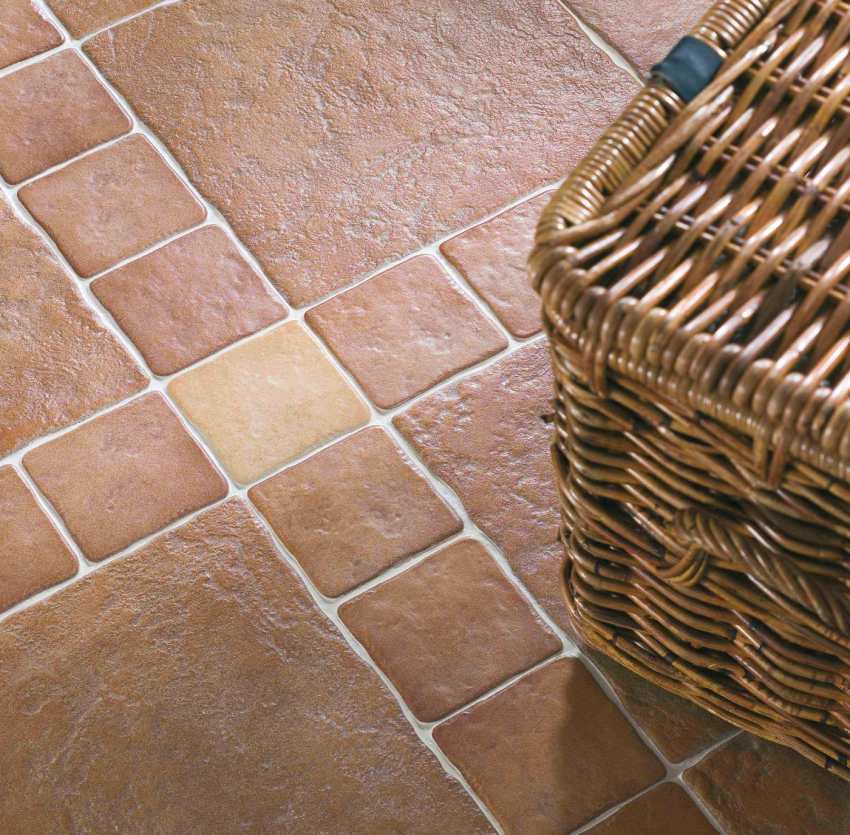
In the bathroom or hallway, it is better not to use matte tiles as flooring, as small particles of dirt and sand can damage the surface of the material
Wear resistance classes of porcelain stoneware tiles
The strength and durability of this product is determined by its wear resistance class. In order to install it in accordance with the requirements of GOST and European standard EN 154, tests are carried out according to a certain method on a roller apparatus. The highest - PEI V class - is assigned to samples that have withstood at least 12,000 roller rotations.
On the market you can buy porcelain stoneware floor tiles in five groups of wear resistance:
- PEI I. It is recommended to equip this type of pavement in places with a low cross-country rate. When it is installed, for example, in supermarkets and, in general, in commercial enterprises, it will quickly become unusable;
- PEI II. There are practically no differences from the previous group. However, the strength properties are still better;
- PEI III. Products of this class can withstand moderate mechanical stress. And due to the democratic price per m², the laying of this type of porcelain stoneware is most often carried out in the apartments of ordinary compatriots and in the offices of enterprises with an average income;
- PEI IV. Such tiles are suitable for premises and their structural components, which are used quite intensively: halls, vestibules, stairs, etc .;
- PEI V. This tile is the most durable. It is suitable for use in places with a very large flow of people: metro and railway platforms. train stations, sports palaces, hypermarkets, squares and sidewalks in large cities, etc. It is used both indoors and outdoors.
Returning to the conversation about the types of surfaces, from the point of view of wear resistance, the following points should be noted. The glazed porcelain stoneware has been assigned PEI IV and PEI V classes. It is characterized by high strength and frost resistance. However, despite the latter property, such tiles are used mainly indoors.
The polished porcelain stoneware is manufactured in PEI II class and is installed indoors. It should not be used to create floor coverings in restaurants, cafes, lobbies, etc., because the polished layer will quickly wear off during intensive use.
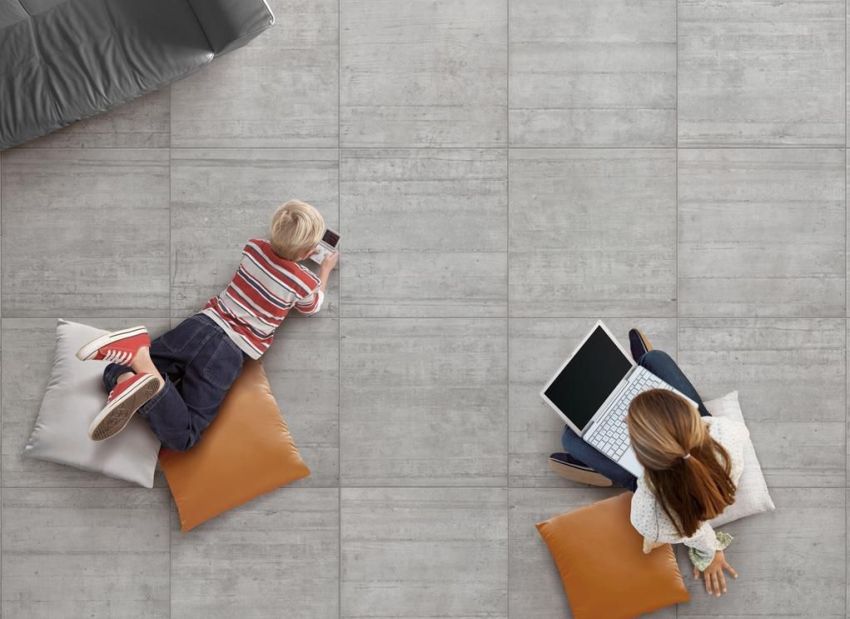
Due to its good physical properties, keromogranite tiles are not afraid of mechanical stress, which significantly increases the service life of this material.
Imitation of porcelain stoneware tiles of various materials
The main difference between ceramic granite flooring elements and ceramic ones is, rather, not in technical characteristics, but in a texture that imitates various types of materials. Let's consider the most popular design solutions from this point of view.
Coating from porcelain stoneware for wood flooring
Natural wood has one drawback: the duration of use does not always satisfy the homeowners. Porcelain stoneware tiles can imitate ordinary floorboards, parquet tiles or block parquet. In appearance, the material is almost indistinguishable from natural, and the operating time is much higher than this indicator of a natural analogue. In addition, it has high thermal conductivity.
Note! Due to its good thermal conductivity, craftsmen often lay porcelain stoneware on a warm floor, since this is the best option for creating a finishing floor covering in a room with underfloor heating.
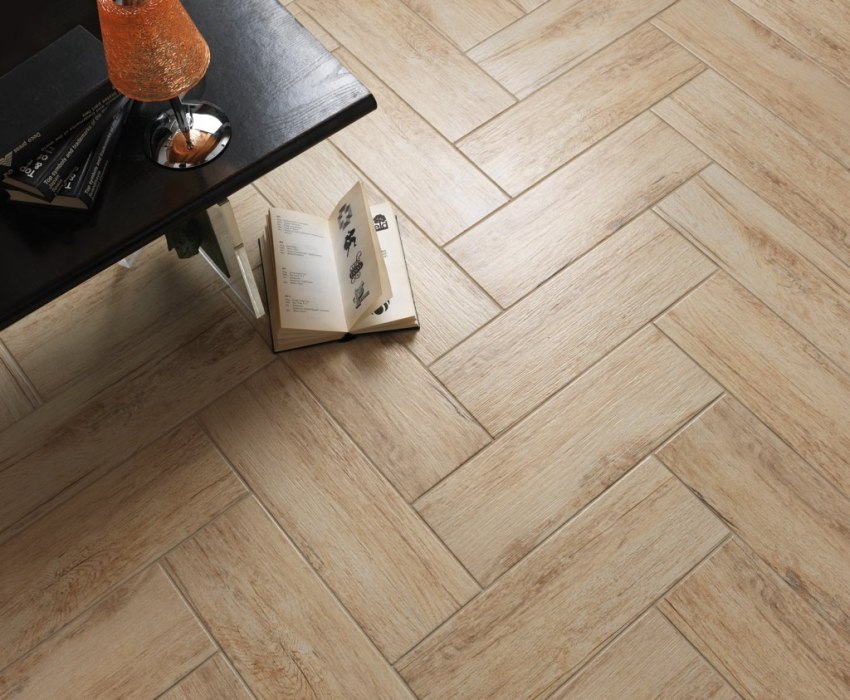
Porcelain stoneware tiles perfectly copy a typical herringbone floor, and it is produced both in the form of small elongated dies and in the form of square plates with a pattern of a narrow parquet floor
The introduction of modern innovative technologies makes it possible to imitate any species and texture of wood, as well as the type of sawing - tangential or radial. At the same time, the variant of imitation of an aged floorboard is so successful that it is impossible to distinguish the coating even by tactile sensations from natural wood. The front surface is rough, matte or polished. Versatility is the main advantage of this design solution. Due to this characteristic, it is possible to cover the floor with tiles imitating wood in all rooms of the dwelling, however, the priority is to use such porcelain stoneware for the floor in the kitchen.
Related article:
How to lay tiles on the floor: installation methods and technology features
Features of the preparation of various types of surfaces. How to grout tiles. Criteria for choosing a tile flooring.
Another popular option for using wood-like tiles is the arrangement of a coating that is associated with parquet. Moreover, for this purpose, you can use not only samples of an oblong rectangular shape. For example, on the front surface of 600-600 mm porcelain stoneware, there may be an image of several parquet boards. However, one more factor must be taken into account. The level of prices for laying porcelain stoneware per square meter depends on the chosen method of creating the coating. And they are like this:
- deck or at a run. This method involves laying rectangular elements of porcelain stoneware under parquet diagonally or along the walls with a shift in the joint of the ends of each row in relation to neighboring elements;
- herringbone. Tiles of an adjacent row are stacked at right angles to each other;
- Vietnamese. The covering is formed by squares of several strips of porcelain stoneware tiles. Laying of elements in an adjacent square is performed in a different direction;
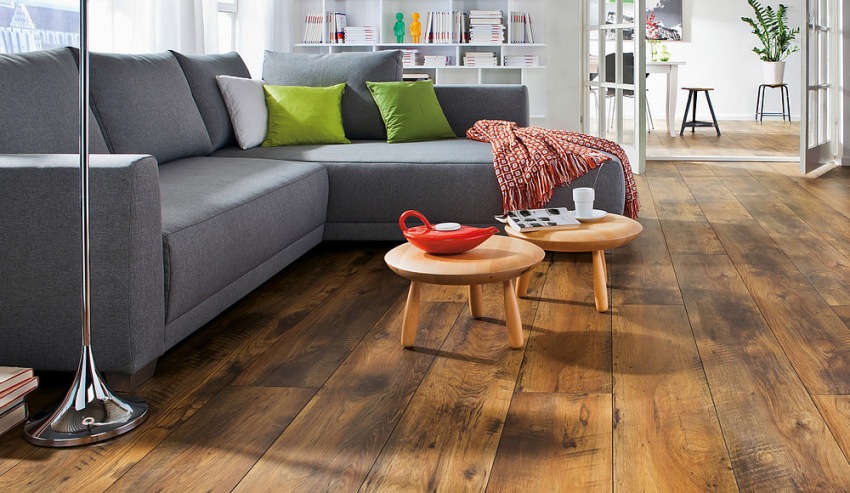
Porcelain stoneware tiles, which have the size and shape of a solid board, create the illusion of a natural wood floor
- network. This is the most difficult styling method. For its implementation, it is necessary to use tiles with different shades. At the same time, elements of different colors are laid in such a way that a pattern resembling baskets is formed on the floor. The price of laying porcelain stoneware on the floor using this method is the highest.
You should not choose floor tiles for parquet, focusing only on its cost. The following characteristics of this product must be taken into account:
- wear resistance;
- chemical resistance. This characteristic can be judged by the presence of the symbols "A" and "AA" in the product labeling. If they are present, such products should be laid where the floor is most often dirty - in the hallway, in the kitchen or in the bathroom;
- coefficient of friction of the tile. This characteristic tells you how slippery the floor will be. It is designated by the Latin letter "R", followed by numbers. A reading below 11 indicates that the surface will be very slippery.
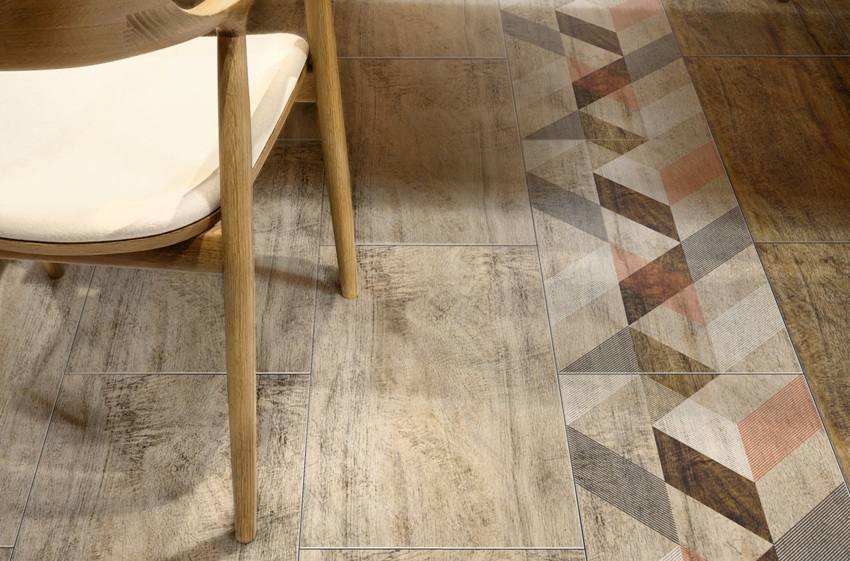
In terms of aesthetic qualities, porcelain stoneware is not inferior to wood, and sometimes even surpasses it, especially when the parquet begins to fade, and the tiles will retain their original beauty
Helpful advice! To completely eliminate the likelihood of injury, use porcelain stoneware tiles with a special anti-slip coating when creating the coating of stair steps.
In addition, an increase in the coefficient of friction is achieved by applying relief elements to the front surface of products: geometric structural components, stripes, etc.
Coating from brick-like porcelain stoneware
High strength characteristics of this type of tile are ensured by double firing of blanks. This technology also brings the following benefits to the final product:
- resistance to fading;
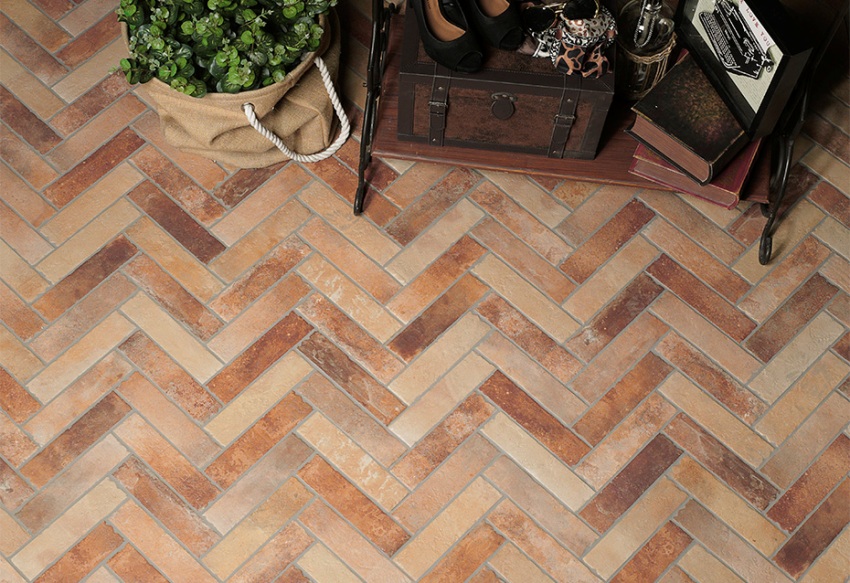
Double firing, used in the manufacture of ceramic granite tiles for brick, gives them excellent strength characteristics, inertness to temperature changes and resistance to fading
- inertness to temperature extremes;
- durability. The service life of decorative porcelain stoneware bricks reaches 40 years.
The main field of application of such tiles is the arrangement of the coverage of pedestrian zones outdoors, as well as paths on the backyard of a country house. Pure brick floors have never been in vogue.
Coating from porcelain stoneware under the laminate
During repairs, a situation is often encountered when you want to lay a wooden floor in the kitchen or bathroom, but the properties of the material do not allow this. High humidity and significant risks of water leakage are considered as limiting factors.
A worthy alternative in this case is the laying of porcelain stoneware tiles under the laminate. If this procedure is carried out correctly, you can get an excellent result - the floor will seem "warm", and there will be no complaints about its waterproofing characteristics. But, as practice shows, only professionals can do this. And although the price per m² of laying porcelain stoneware on the floor on average in the country starts at 350 rubles, you should not refuse their services.
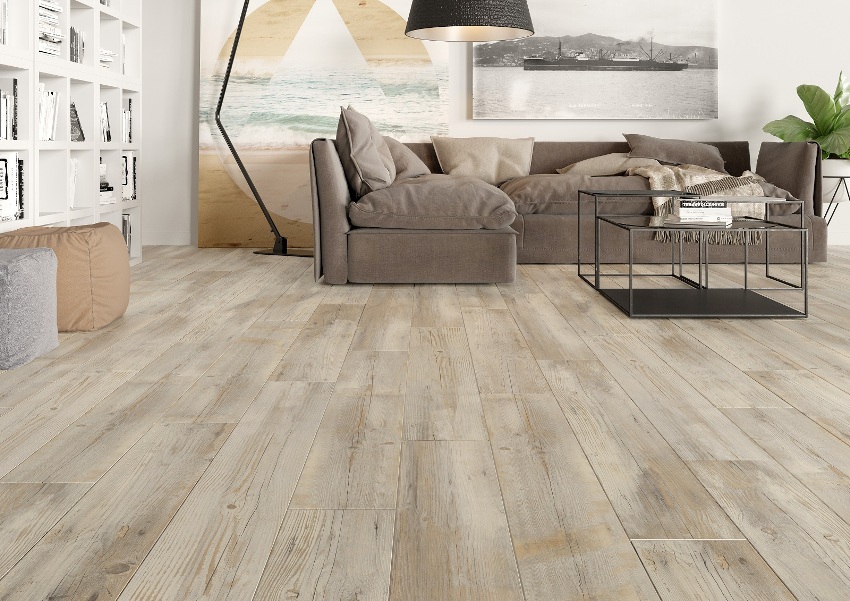
The elaboration of the material is so deep that porcelain stoneware even tactilely resembles a parquet plank, the difference is captured only due to the surface temperature
If you decide to lay the coating yourself, when choosing a tile, pay attention to its caliber. This concept means the discrepancy between the actual dimensions of the facing elements. For example, a size of 300x300 porcelain stoneware for a floor can mean 302x302 or 298x298 mm. This is attributed to the fact that clay from different places is characterized by different properties.
A responsible manufacturer practices the selection of tiles of the same size and then assembling them into one batch ready for delivery to the retail network. That is, all cladding elements with identical geometric parameters are packed in one box. That's what caliber is.
Tiles of almost the same dimensions can be installed by varying the thickness of the joint. But installation is not possible with significant discrepancies. Often they are faced with a situation when only a few tiles are not enough to complete the creation of the coating, and it is simply impossible to buy them in addition. This is explained by the fact that factories of such a profile do not specifically produce products of a certain caliber. This is the result of selection and control of the geometry of the finished product.
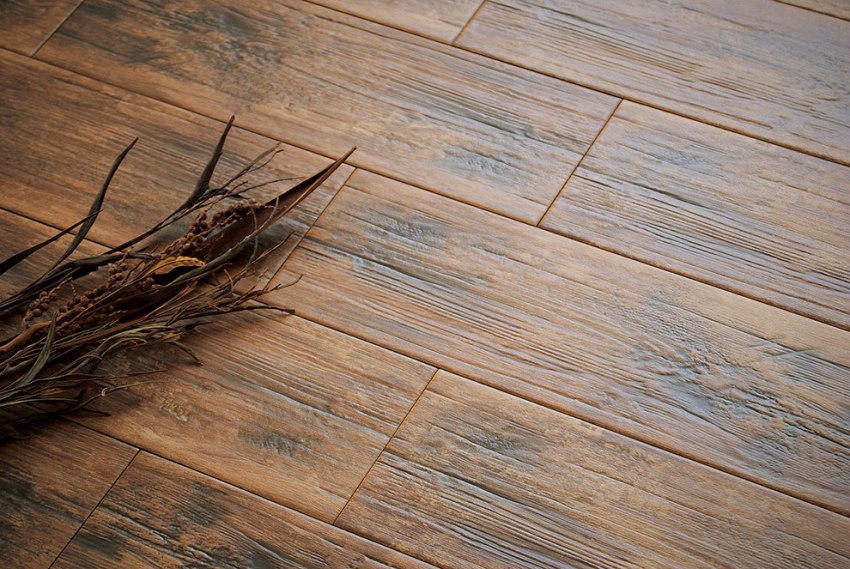
The use of porcelain stoneware tiles will allow you to bring the aesthetics of wood, its naturalness and unique beauty to the interior of premises with difficult operating conditions
Helpful advice! You need to buy tiles of the same caliber with a margin in advance, otherwise, if necessary, there is a risk of not finding the same in the future.
Returning to the conversation about creating a tile covering for a laminate in the kitchen, it should be noted that many designers recommend implementing a combined option. That is, the working space is laid out from porcelain stoneware, and the dining area is laid out with laminate. This combination will visually zone the space.
Today there are 2 methods for joining tiles and laminate:
- without a nut;
- hide the joint under the sill;
The choice of method depends on the owners' vision of the aesthetics of the created interior.
Features of laying porcelain stoneware under concrete
The specificity of porcelain stoneware tiles is the reason for their use for outdoor surfaces. But it should be understood that the laying of such facing elements on the street involves the use of accompanying materials and special structures to fix them. And work can be done at a temperature not lower than 5 ° C and not higher than 40 ° C.
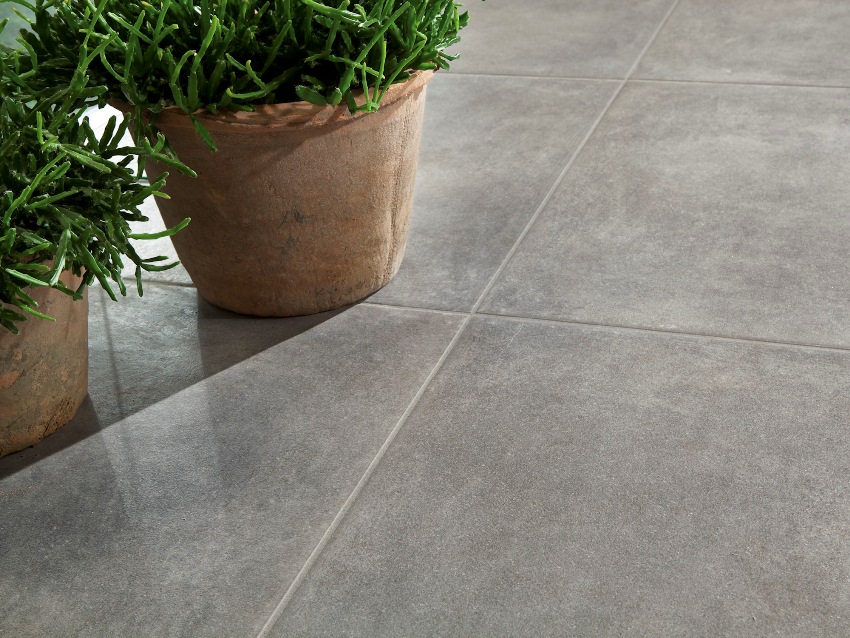
Designers create such shades and textures of porcelain stoneware tiles imitating concrete that the material looks very stylish, original and modern.
First you need to create a concrete screed. Then a tile defect is carried out. In addition, a sufficient amount of adhesive dry mixes must be prepared in advance. However, in this case, the use of liquid special glue for porcelain stoneware, the price of which is quite affordable for our ordinary compatriot, will also be required.
It will be useful to reinforce the screed. For this, you can use fiber or metal mesh. True, the first option will require significant material costs.
Tile laying should be started only after the base - concrete screed has completely dried. The amount of time required for this is calculated very simply. Every 1 centimeter dries in about 7 days. That is, a 3 cm thick screed will completely dry in 21 days.
The algorithm here is simple: first, we apply a special tile glue for outdoor use for porcelain stoneware on the base area. After that, we apply tiles to the surface. Better to start from the middle of the site. The fact is that at the edges, most likely, you will need to lay tile scraps. To increase the degree of adhesion of the material, it is recommended to pre-prime the base.
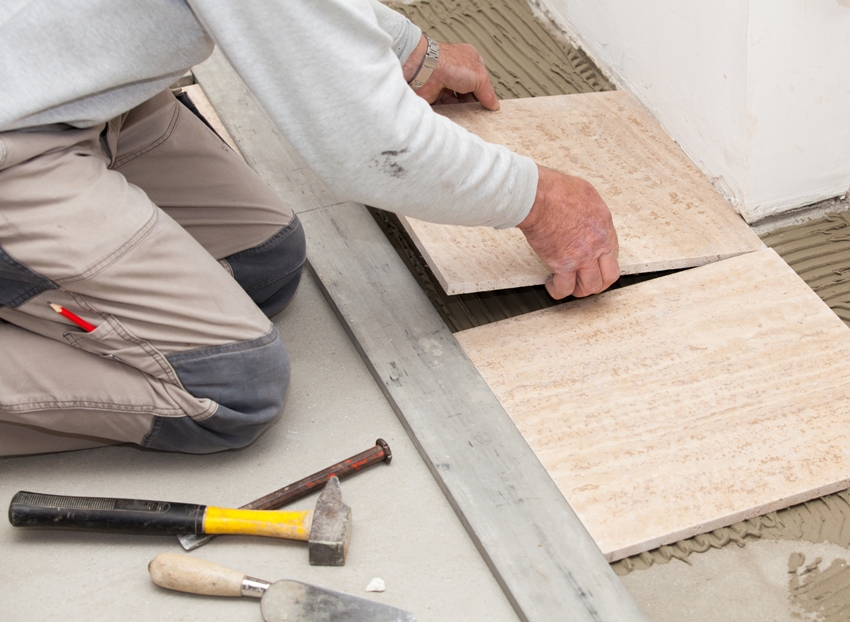
For high-quality laying of tiles, it is not enough to have a perfectly flat surface, you also need to apply a layer of glue of the same thickness to it
The special street glue is a two-component, temperature-resistant compound. Its packaging must have the following markings:
- C2 - class suitable for outdoor use with porcelain stoneware;
- E - increased service life;
- F - the ability to quickly gain strength;
- T - thixotropy. This is the ability to increase viscosity at rest, and, conversely, to reduce it under the influence of stress.
The tile laying process should be carried out with control of the required level of the surface slope, direction of seams, corners, laying pattern, etc.
Helpful advice! For even, perfect seams, use commercially available special crosses.
In addition, when working, in addition to a pre-drawn installation scheme, use a building level. In order to maintain verticality, you can also pull the string in the direction of the planned placement of the tiles.
Matt floor coveringporcelain stoneware 600x600 mm
Floor tiles of this type are most commonly used today. This is due to the fact that such sizes are the most universal. That is, you can create a floor covering on the basis of 600x600 mm porcelain stoneware in any room - both small and decent area. In addition, this format allows the production of tiles with a huge variety of textures, which greatly expands the possibilities of design. Actually, this characteristic also predetermines a significant range of prices for porcelain stoneware 600x600 mm.
According to the criterion "texture", this material is divided into the following types:
- homogeneous. The entire body of such a tile is completely painted. Therefore, even intensive abrasion does not lead to the loss of cladding elements of their attractive appearance;
- partially painted. The design of 60x60 cm porcelain stoneware of this type consists of a pigmented top layer and a substrate.At the same time, the latter is performed in a classic range, while the top layer is colored;
- glazed. The basis of such porcelain stoneware for a 60x60 cm floor is distinguished by improved performance characteristics, but in appearance it is similar to classic tiles.
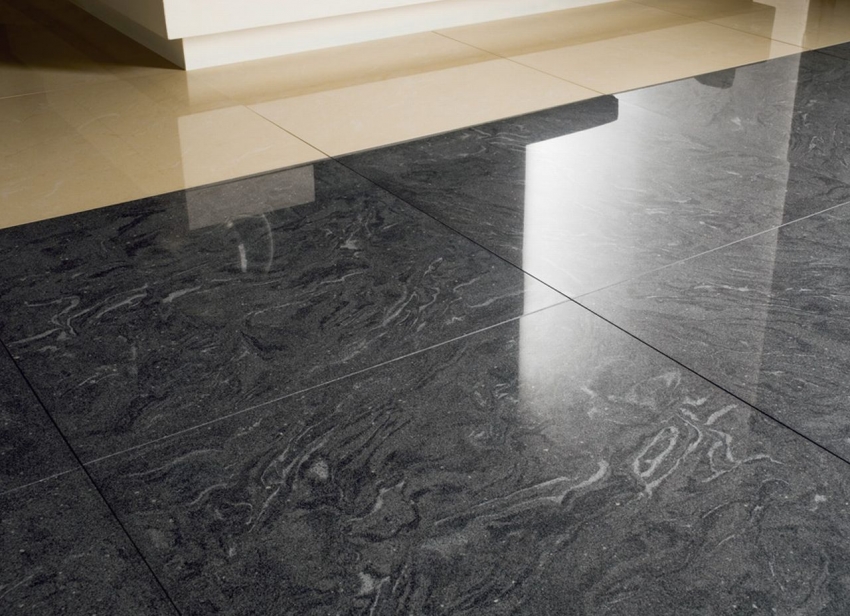
Square-shaped porcelain stoneware tiles with a side of 60 centimeters are most in demand, since their dimensions allow revealing large areas
Modern industry also produces skirting boards and steps from this material. Of course, the price of facing the stairs with porcelain stoneware is rather big, but the high attractiveness of the structure decorated in this way neutralizes this minus.
DIY step-by-step instructions for laying porcelain stoneware
There are two ways to create a floor covering from this material:
- to the raised floor. This method is quite complicated, so only a professional can implement it. The fact is that in this case it is supposed to carry out preliminary installation from the connected racks of the supporting structure with the subsequent placement of elements on it for fixing the tiles. The disadvantages include the fact that the price of laying porcelain stoneware using this technology increases significantly. After all, it is necessary to additionally buy parts for future equipment;
- for special glue for porcelain stoneware. Here everything is more familiar and simpler, which is why this method has become widespread. However, it is impossible to lay tiles on a concrete floor with depressions and sagging. The base must be flat.
Helpful advice! Level the base in the following sequence: lay a layer of waterproofing, install beacons and fill with self-leveling mixture.
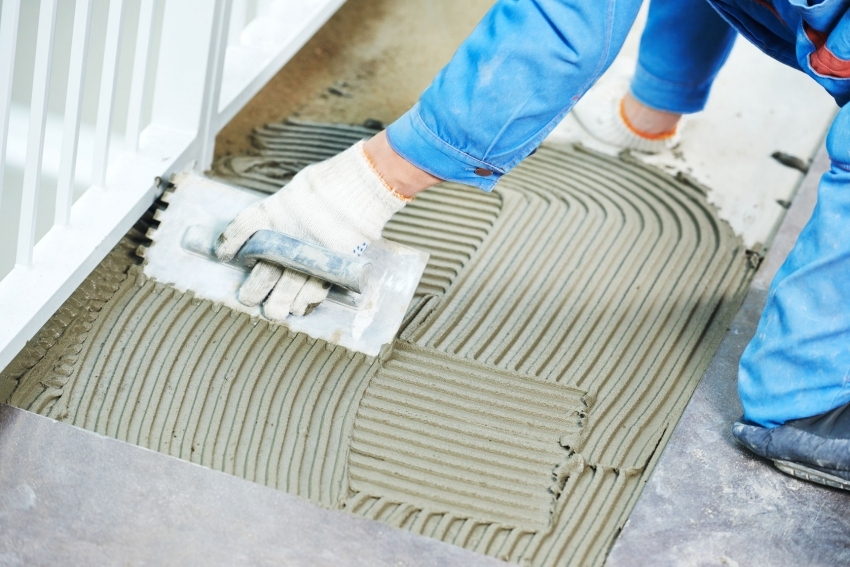
To tile adhesive securely fixed the lining, it is necessary to maintain the technical characteristics of the mixture
And here there is another critical point. When laying porcelain stoneware on a warm floor, it is necessary to control the absence of intersections of the heating cable with the thermal insulation material.
Laying tiles in the second way involves the following activities:
- a glue mixture is being prepared;
- the mixture is applied to the prepared substrate with a notched trowel (tooth size 8-10 mm). A smooth spatula cannot be used;
- the tile is pressed against the base. Time for position correction - no more than 10 minutes;
- after completing the laying of the entire working surface, wait a day;
- after 24 hours, the seams are cleaned. Moisten them immediately before grouting;
- grout produced by a special color-matched mixture. Use a rubber spatula to do this. At the same time, control the uniformity and density of the material;
- at the end, the remaining solutions are removed. Any chemical compounds can be used for this purpose. The only exceptions are alkalis.
To find out if the underfloor heating works after installation under porcelain stoneware, you need to make sure that the heating cable is intact. To do this, measure the resistance of the conductor with a tester before and after this procedure. The difference from the nominal value should not exceed 5%.
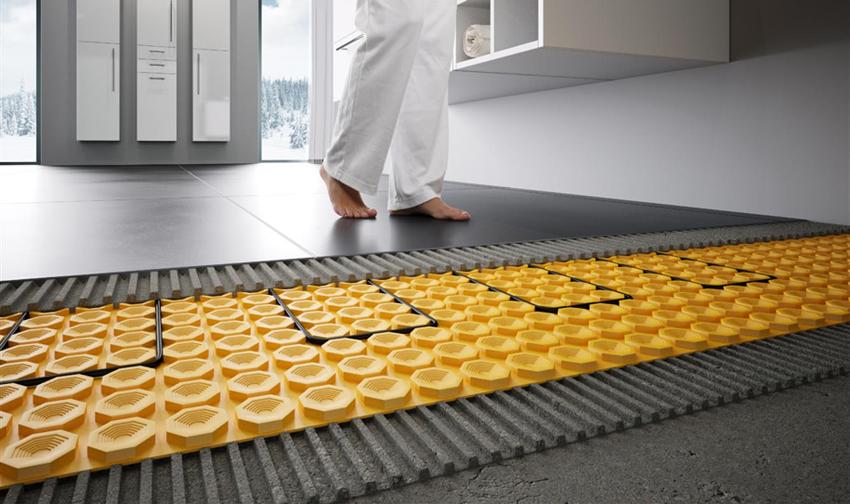
Since the tile surface is rather cold, it is often recommended to use a special underfloor heating system for heating.
Leading manufacturers of porcelain stoneware floor tiles
This material appeared in the late 70s of the last century in Italy. However, judging by the reviews, the porcelain stoneware produced by factories from Spain is a serious competitor to products manufactured by factories in the country from the Apennine Peninsula. The tiles in their performance are distinguished by an exquisite design. To be convinced of this, it is enough to study the photo of porcelain stoneware for the floor from enterprises of the corresponding profile of these states.
The high demand for such products contributed to the appearance in our country of subsidiaries producing ceramic granite tiles from Italy and Spain.
Atlas Concorde (Italy). The delivery of collections from this brand to Russia began in 1993. The Atlas Concorde Russia factory operates in Moscow today, producing ceramic granite tiles on Italian equipment using a technology developed by specialists from Italy. Its products are associated with the most current trends and current trends in this segment of the world market.
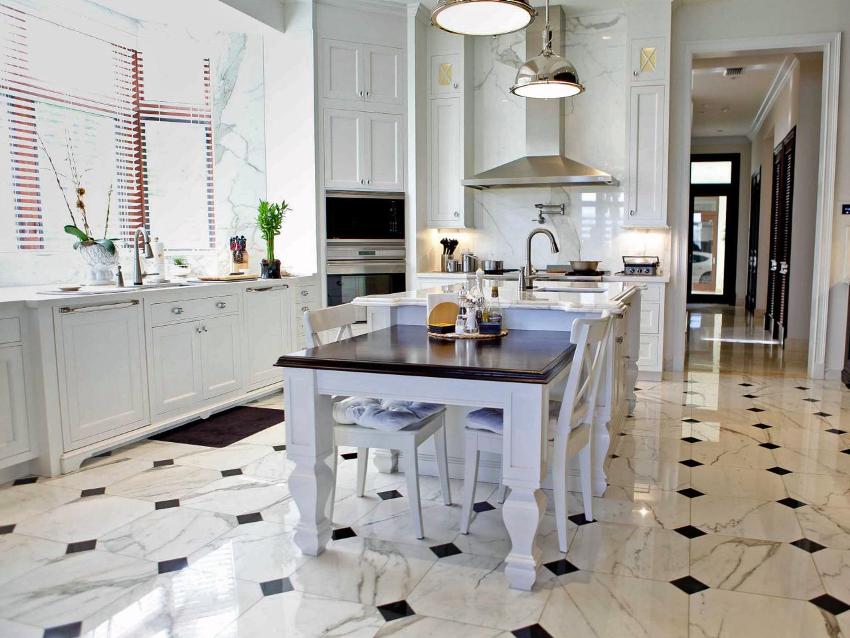
We can safely say that the Atlas Concorde tile collections define style trends and are masterpieces of modern decorating art.
Kerama Marazzi (Italy). Production in Russia of ceramic granite for the Kerama Marazzi floor has been mastered at two factories - in the city of Orel and in the Stupino district of the capital region in the village of Malino. Cooperation with the leading design studios in Italy, the support of the masters of this country in combination with a multi-stage control system provides an opportunity to produce products of European quality. As a daughter of the Kerama Marazzi brand, the Kerama group of factories remains Russian. Today, it largely meets the needs not only within the country, but also in the neighboring countries.
Venus Ceramica (Spain). Porcelain stoneware flooring performed by this company is characterized by a trend towards the classics. The relief of the tiles emphasizes the more restrained colors and patterns. It is especially elegant in the fine texture of the Katherine Palace models and in the geometric highlights of the Marrakech collection.
CJSC "Contact" (Russia). At present, this company is the largest manufacturer of floor tiles in the north-western region of the country. Particularly popular is the gray Kontakt 30x30 porcelain stoneware. The thickness of the facing specimen is 8 mm. There are 8 model lines on sale from the factory, differing in shades of gray - from light brown to gray-blue. This design decision of the floor covering is an excellent background for most active colors. And if you choose the texture of the tiles correctly, then the floor will look stylish and noble.
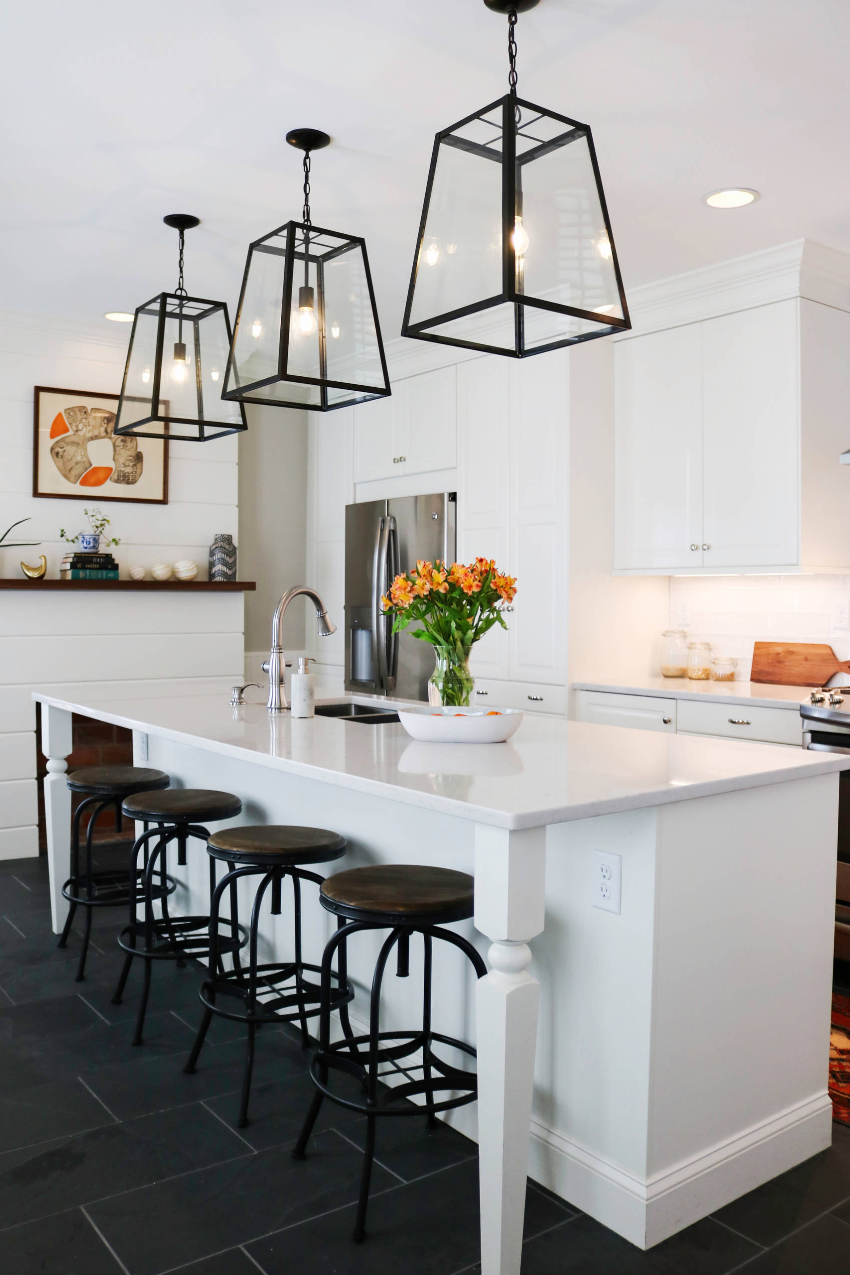
CJSC "Contact" is a leading domestic manufacturer of high quality ceramic granite tiles at relatively low prices
In conclusion, it must be said that, in general, the advantages of porcelain stoneware for the floor are more than disadvantages, and the disadvantages should be considered only as a continuation of the features of this facing material.
